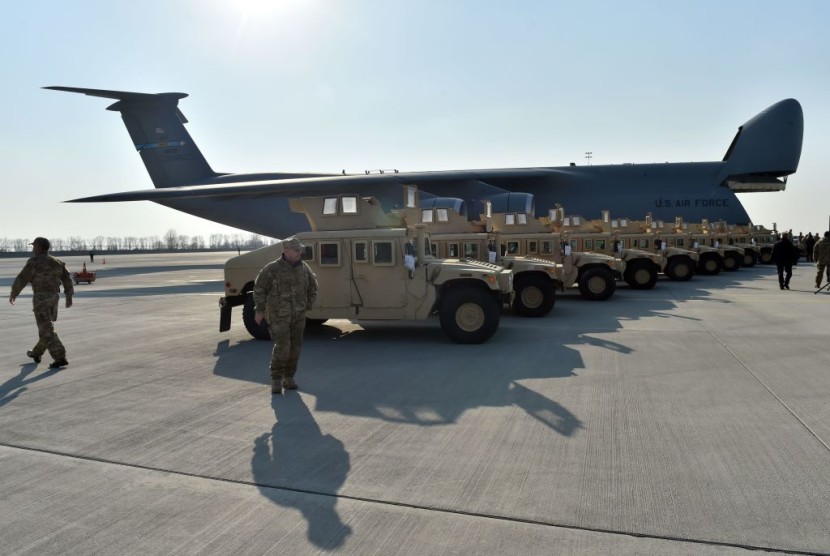
US aid sent to Kyiv is not suitable for the US military capacity in East Asia because China has more capability.
US Sends $40 Billion Aid to Kyiv
According to Sputnik News, the Biden administration disputes its involvement in the Ukraine conflict, beginning with the special Russian operation to exterminate Ukrainian Nazis and continuing with the influx of military aid worth $40 billion sent to Ukraine.
As reported by a US newspaper, the Biden White House was unable to deal with the People's Liberation Army due to the AFU's ongoing equipment losses on the battlefield.
The US is confronted by a powerful rival in China in East Asia, a territory that is even more essential for American prosperity than Ukraine.
This came after the Biden administration finally revealed the state's current defense plan in late October, recognizing China as the most prominent national security threat.
Gen. Dan Hokanson, the Army chief of the US National Guard Bureau, mentioned that the US army wants to increase its training presence in the region in a question-and-answer session with a different American news organization last summer.
The approach to preparing the United States National Guard began in 2002. Fifteen of the 36 nations in the Asia-Pacific region have decided to join the program based on the list. Bangladesh, Cambodia, Fiji, Indonesia, Malaysia, Mongolia, Nepal, Papua New Guinea, the Philippines, Sri Lanka, the Maldives, Thailand, Timor-Leste, Tonga, and Vietnam are only a few of their peers, noted Defense One.
US Military Capacity Compromised
Hokanson made these statements in reaction to General Mark Milley, Chairman of the Joint Chiefs of Staff, who explained during a visit to Indonesia that America's increased focus on emerging economies has taken on new significance in light of China's steadily rising "assertiveness" over the previous five years, citing Cosmo Chronicles.
Hokanson made these statements in reaction to General Mark Milley, Chairman of the Joint Chiefs of Staff, who explained during a visit to Indonesia that America's increased focus on emerging economies has taken on new significance in light of China's steadily rising "assertiveness" over the previous five years.
Beijing takes a dim view of Taipei's vastly increased weapons deals as well as the American Vice President's commitments to protecting the island in the event of a Chinese invasion.
In Ukraine, Washington has continued to supply Kyiv with money and weapons, despite Moscow's warnings that doing so exacerbates the Ukrainian conflict and turns the US into a direct accomplice.
President Joe Biden continued with a questionable $1.7 trillion spending bill passed by the Democrats last year with no opposition from the GOP, with almost $45 billion in aid for Ukraine and NATO allies.
A few specialists also expressed concerns that the US ran out of weapons to send to Ukraine last year. Mark Cancian of the US-based Center for Strategic and International Studies think tank did write in an assessment that the US accumulations of some hardware are "approaching the lowest level required for war plans and preparation" and that Washington stockpiling levels that were present before the Russian special operation in Ukraine might take many years.
The US aid sent by Biden to Kyiv has weakened the US military capacity in Asia, with fears that China and Russia can at this time overwhelm the US.
© 2025 HNGN, All rights reserved. Do not reproduce without permission.








